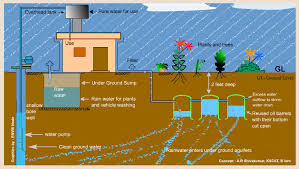India needs to cut its levels of air pollution to preserve and increase its productivity.
India is experiencing an economic surge after Prime Minister Narendra Modi entered office in 2014. Investors see India as a growth opportunity. Last year, capital expenditure projects attracted $23 billion of foreign investment. Yet the country’s potential is clouded by environmental problems, which have been caused by pollution.
Water pollution has been in focus because of the River Ganga. Air pollution is not featured as much as it should in the news, but noxious air is shortening the life expectancy of India’s citizens. The Environmental Protection Index (EPI) air quality ranking places India at 174 out of 178 countries on the population’s exposure to particulate matter 2.5 (PM2.5). According to an article in the Economic and Political Weekly, particulate matter comprises small particles suspended in the air with a concoction of “acids (sulphate and nitrates), ammonia, sodium chloride, black carbon, water, and mineral dust.” PM2.5 is particularly egregious to health because it burrows deeper into the lungs and can cause pneumonia and cancer. Needless to say, this results in an unhealthier and less productive population apart from increasing pressure on an already overburdened health care system.
The World Health Organization’s (WHO) 2005 guidelines state that permissible exposure to PM2.5 should be an annual average of ten micrograms per cubic meter (μg/m3). The Central Pollution Control Board’s National Ambient Air Quality Standards (NAAQS) set the rate at an average of 40μg/m3 per year. Around 660 million people live in cities with PM2.5 higher than 40μg/m3 each year, the NAAQS standard. Over a billion people, around 99.5% of the Indian population, live in places with PM2.5 levels over the WHO’s more stringent guidelines.
Increasing air pollution is causing lower labor productivity. It is also damaging agriculture. Crop yields have been falling. Tourism is likely to be affected with India’s legendary smog causing increasing problems to foreign visitors. The poor suffer disproportionately from air pollution. Those who work in or live near factories, drive auto rickshaws and work as traffic policemen breathe noxious fumes on a daily basis. According to the abovementioned article in the Economic and Political Weekly, life expectancy for 660 million Indians could be increased by an average of 3.2 years if pollution was limited to NAAQS standards.
India is experiencing an economic surge after Prime Minister Narendra Modi entered office in 2014. Investors see India as a growth opportunity. Last year, capital expenditure projects attracted $23 billion of foreign investment. Yet the country’s potential is clouded by environmental problems, which have been caused by pollution.
Water pollution has been in focus because of the River Ganga. Air pollution is not featured as much as it should in the news, but noxious air is shortening the life expectancy of India’s citizens. The Environmental Protection Index (EPI) air quality ranking places India at 174 out of 178 countries on the population’s exposure to particulate matter 2.5 (PM2.5). According to an article in the Economic and Political Weekly, particulate matter comprises small particles suspended in the air with a concoction of “acids (sulphate and nitrates), ammonia, sodium chloride, black carbon, water, and mineral dust.” PM2.5 is particularly egregious to health because it burrows deeper into the lungs and can cause pneumonia and cancer. Needless to say, this results in an unhealthier and less productive population apart from increasing pressure on an already overburdened health care system.
The World Health Organization’s (WHO) 2005 guidelines state that permissible exposure to PM2.5 should be an annual average of ten micrograms per cubic meter (μg/m3). The Central Pollution Control Board’s National Ambient Air Quality Standards (NAAQS) set the rate at an average of 40μg/m3 per year. Around 660 million people live in cities with PM2.5 higher than 40μg/m3 each year, the NAAQS standard. Over a billion people, around 99.5% of the Indian population, live in places with PM2.5 levels over the WHO’s more stringent guidelines.
Increasing air pollution is causing lower labor productivity. It is also damaging agriculture. Crop yields have been falling. Tourism is likely to be affected with India’s legendary smog causing increasing problems to foreign visitors. The poor suffer disproportionately from air pollution. Those who work in or live near factories, drive auto rickshaws and work as traffic policemen breathe noxious fumes on a daily basis. According to the abovementioned article in the Economic and Political Weekly, life expectancy for 660 million Indians could be increased by an average of 3.2 years if pollution was limited to NAAQS standards.





